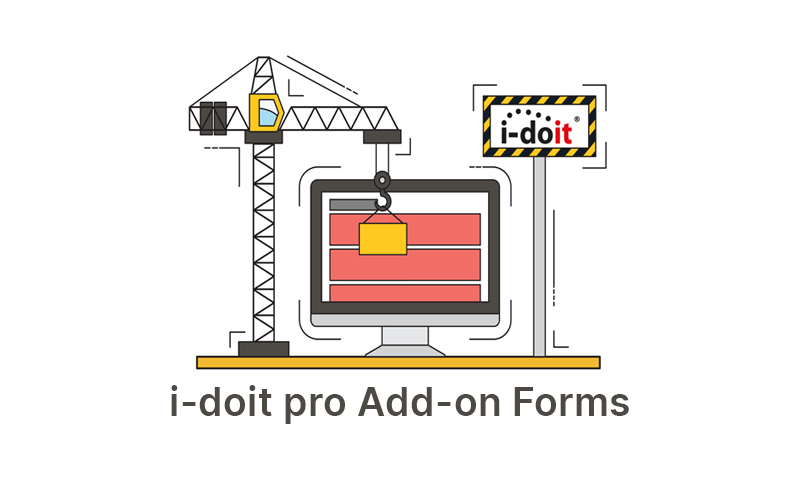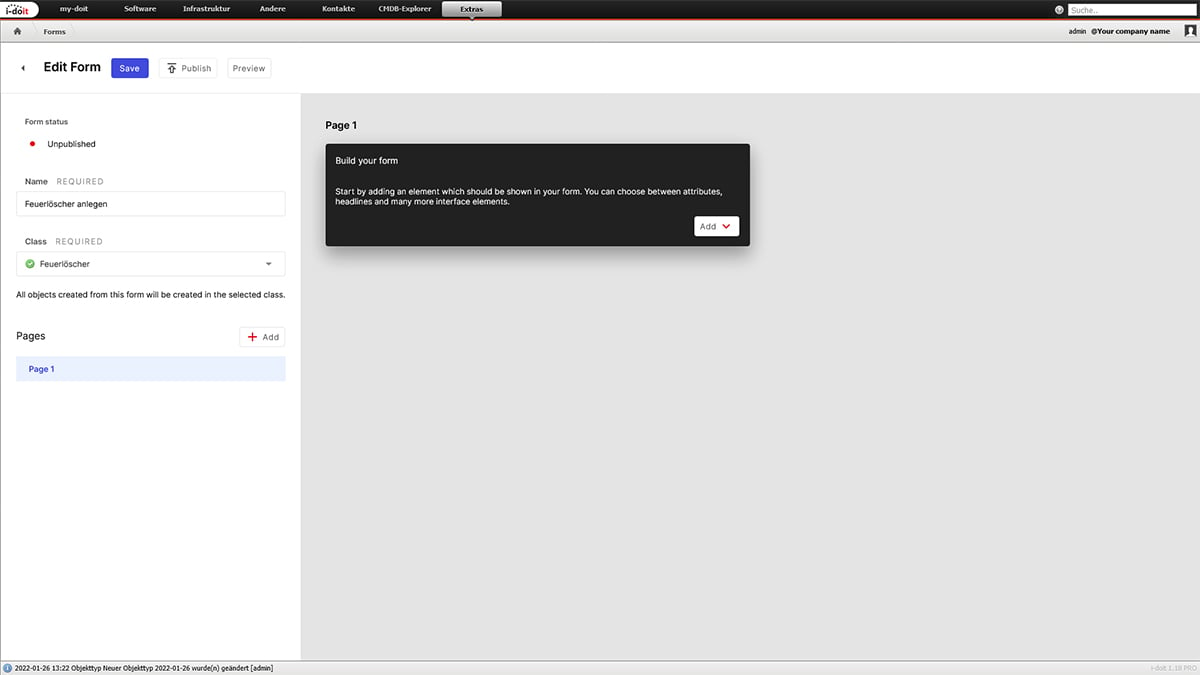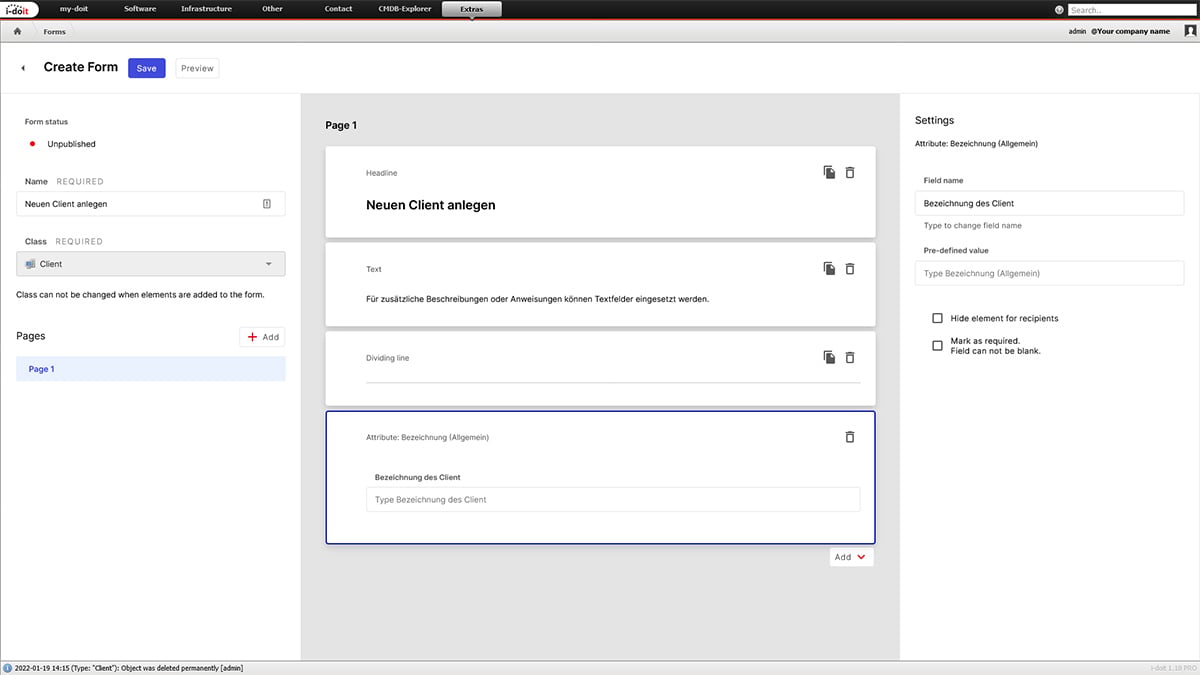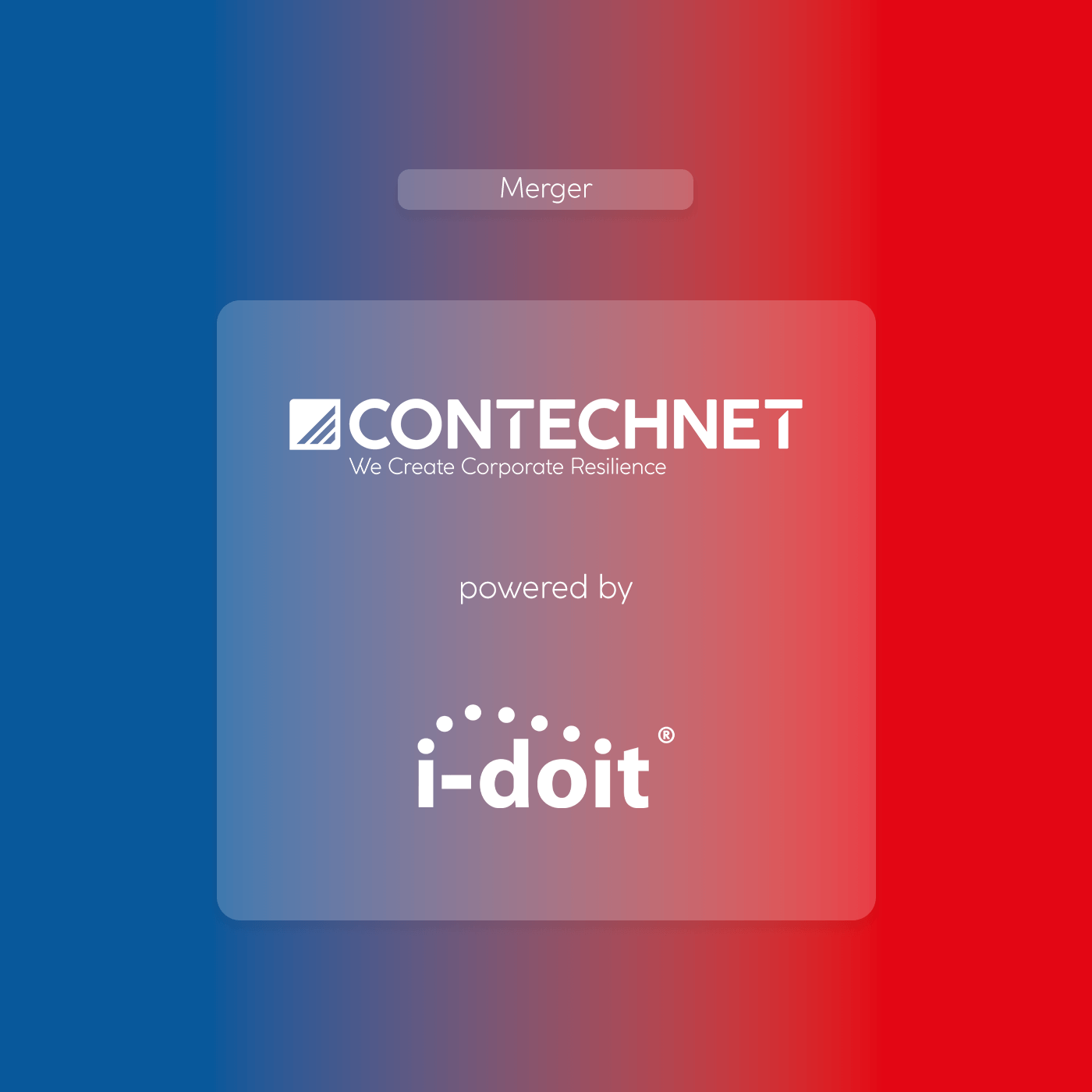Selection of attributes
The values that are to be transferred to i-doit and used for the creation of new objects are entered in attribute fields. For each attribute field, it can be specified whether it is a mandatory field or whether filling it by the user is optional.
Attribute fields can also be given a pre-defined value and hidden from the user later. This is especially helpful if you want to automatically enter certain values when creating new objects.
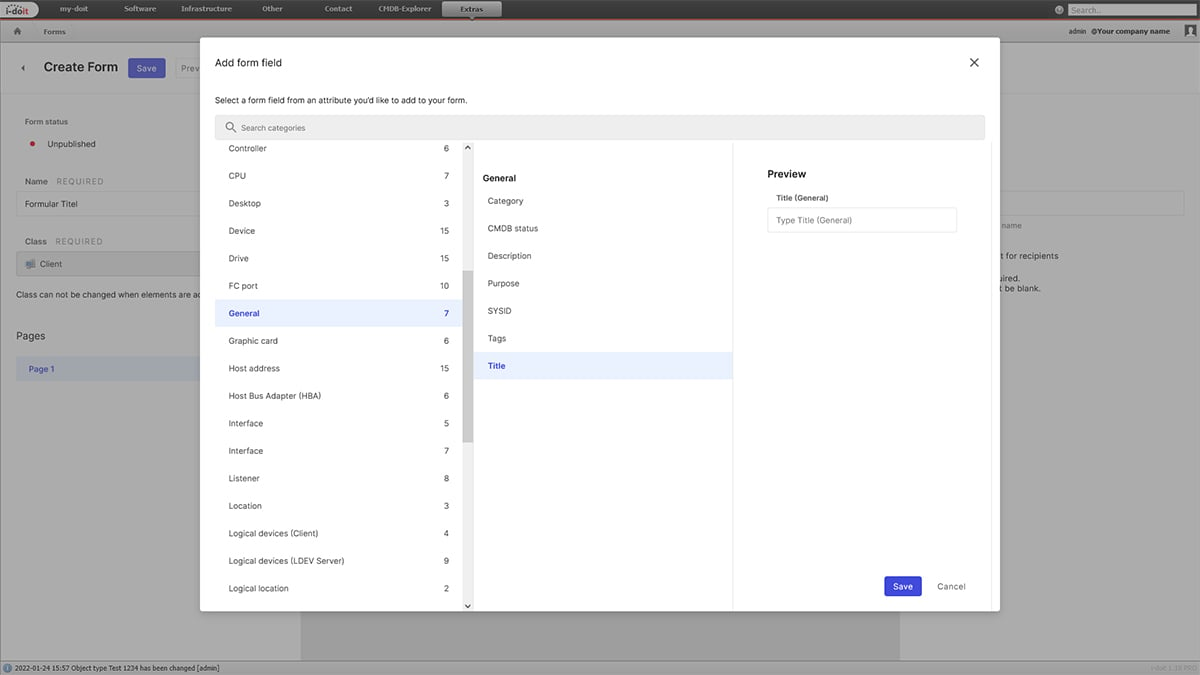
A simple example:
New clients should already be recorded with basic information via a form when they are ordered. On the one hand, this way the IT department knows that new devices have been ordered, and on the other hand, the already existing object can simply be completed with information upon delivery.
In this example, it would make sense to set the CMDB status to “Planned” instead of “In operation” when creating the new client. You can see how this is realised with the Forms Add-on here: A hidden field for the CMDB status is inserted in the form and defined as the value “Planned”.
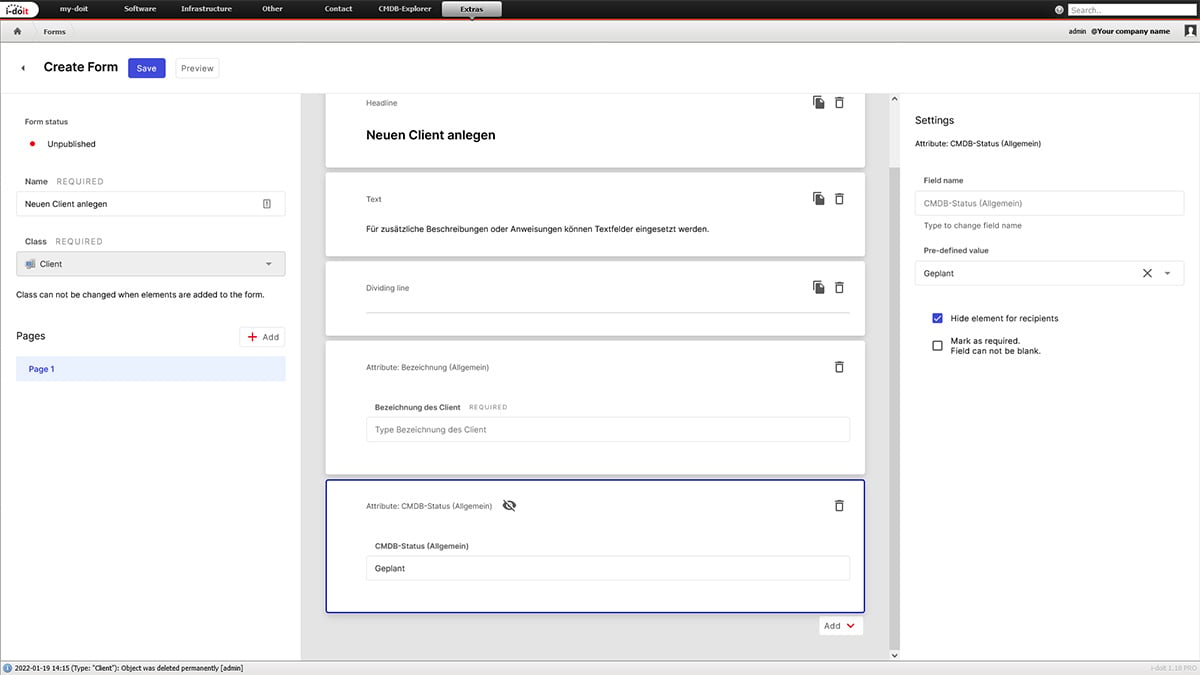
Note: Each attribute field can be hidden by activating the checkbox for users.
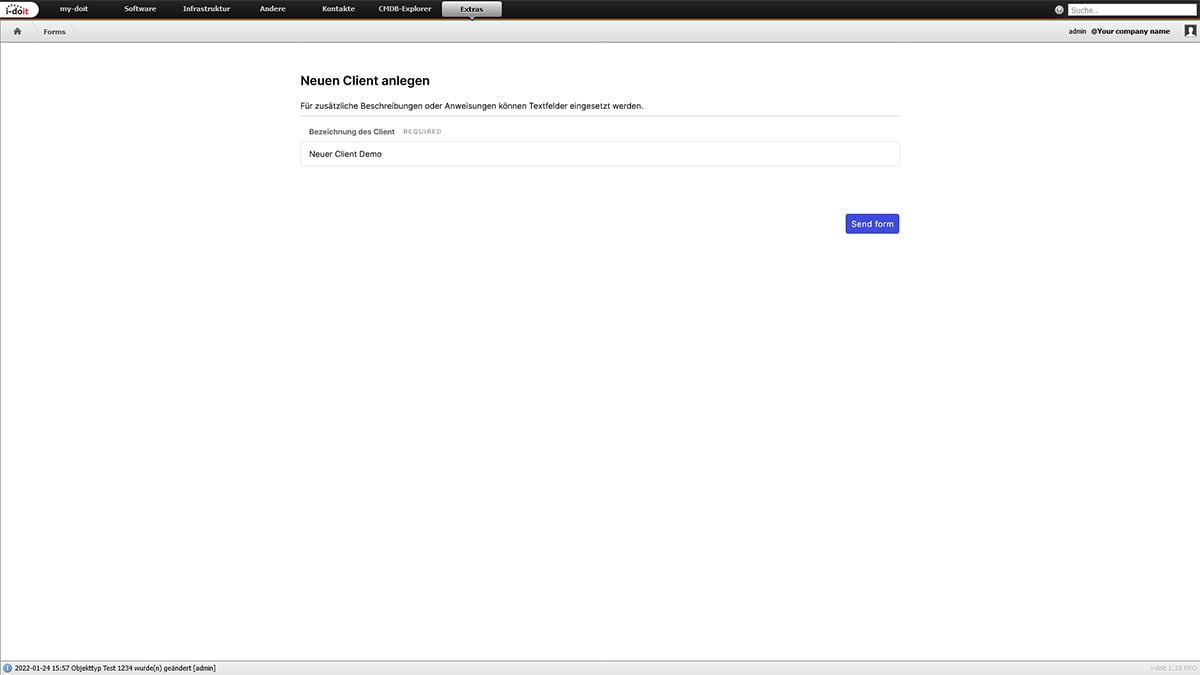
When a user enters the form, only the desired fields are visible. The selection of the CMDB status is hidden.
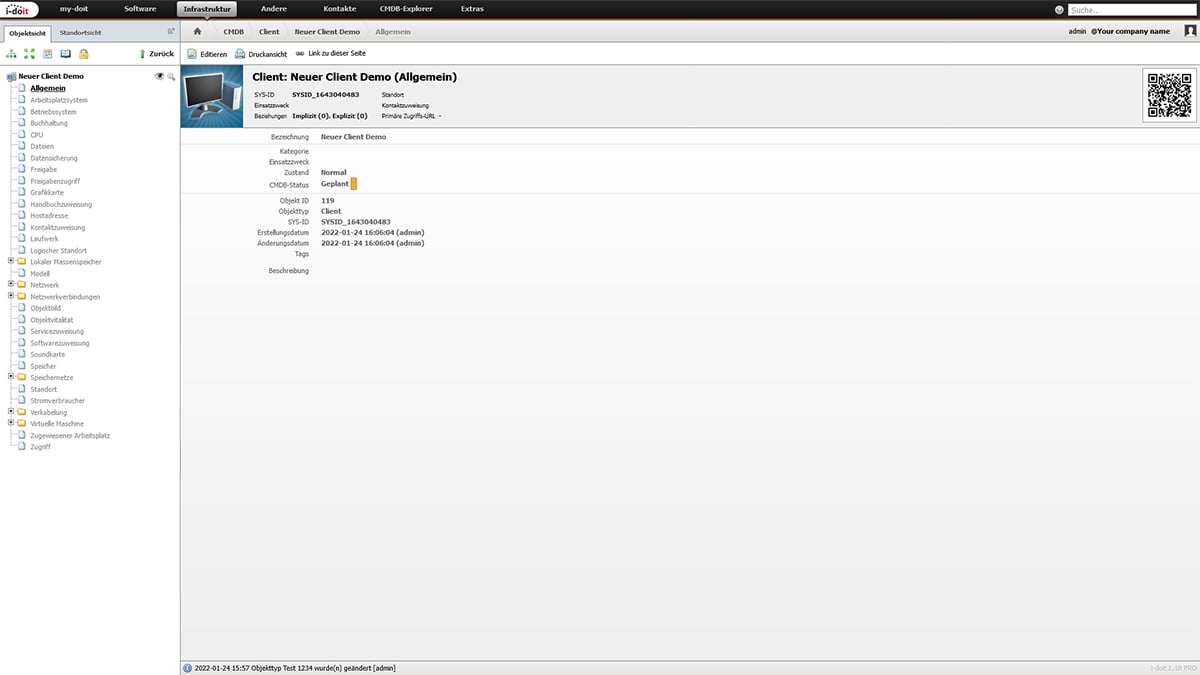
The client is created in i-doit after submitting the form. The defined CMDB status “Planned” was automatically set accordingly by the predefined attribute field.
More than just simple text fields
The Forms Add-on automatically determines which type of input field is provided based on the selected category. For the name of an object, for example, a simple text field is provided. But there are many other category field classes in i-doit. In the category “Model”, for example, “Dialog+” fields are used. These provide users with predefined values to choose from in i-doit. Exactly these values are also available to users in the Forms add-on.
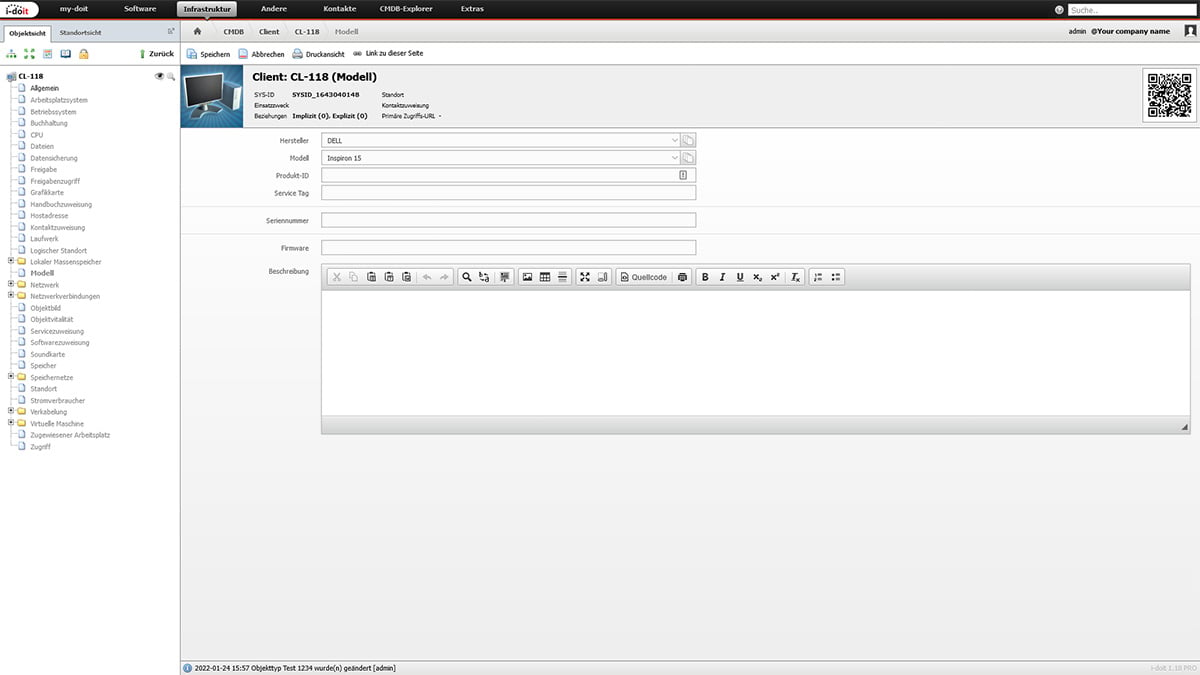
In i-doit, the selection of manufacturer and model is done via so-called Dialog+ fields. These have a dependency: depending on the selection of the manufacturer, only the associated models are displayed.
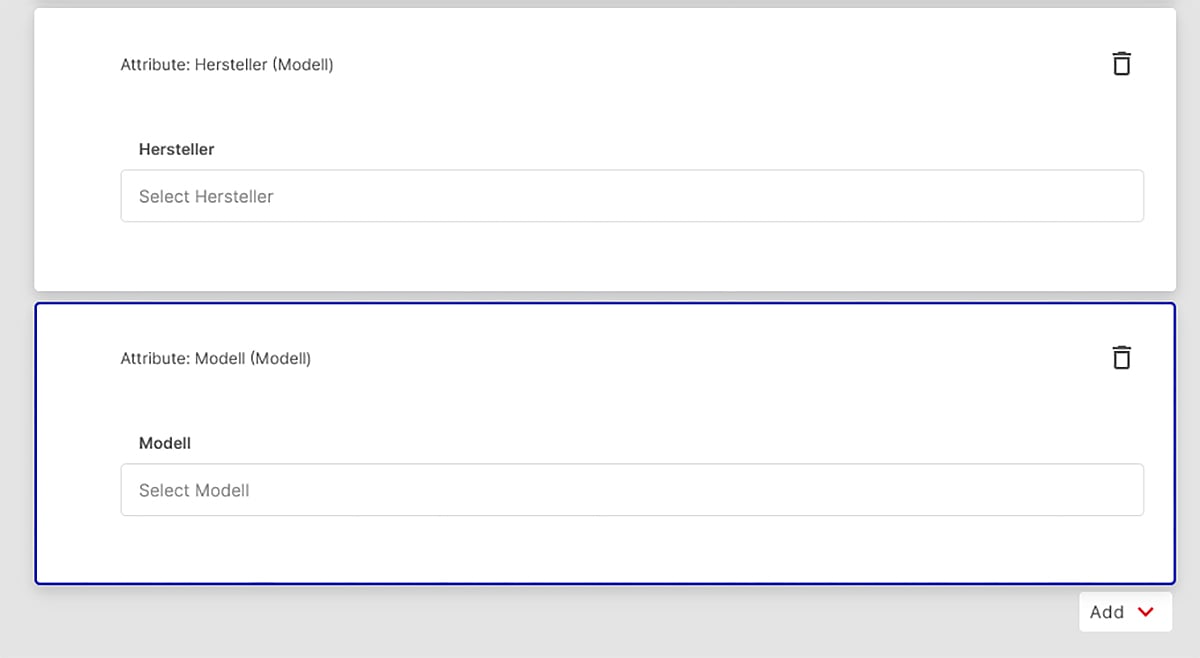
In the Forms Add-on, these attribute fields can also be selected and used by the users. In this example we have created two attribute fields for manufacturer and model.
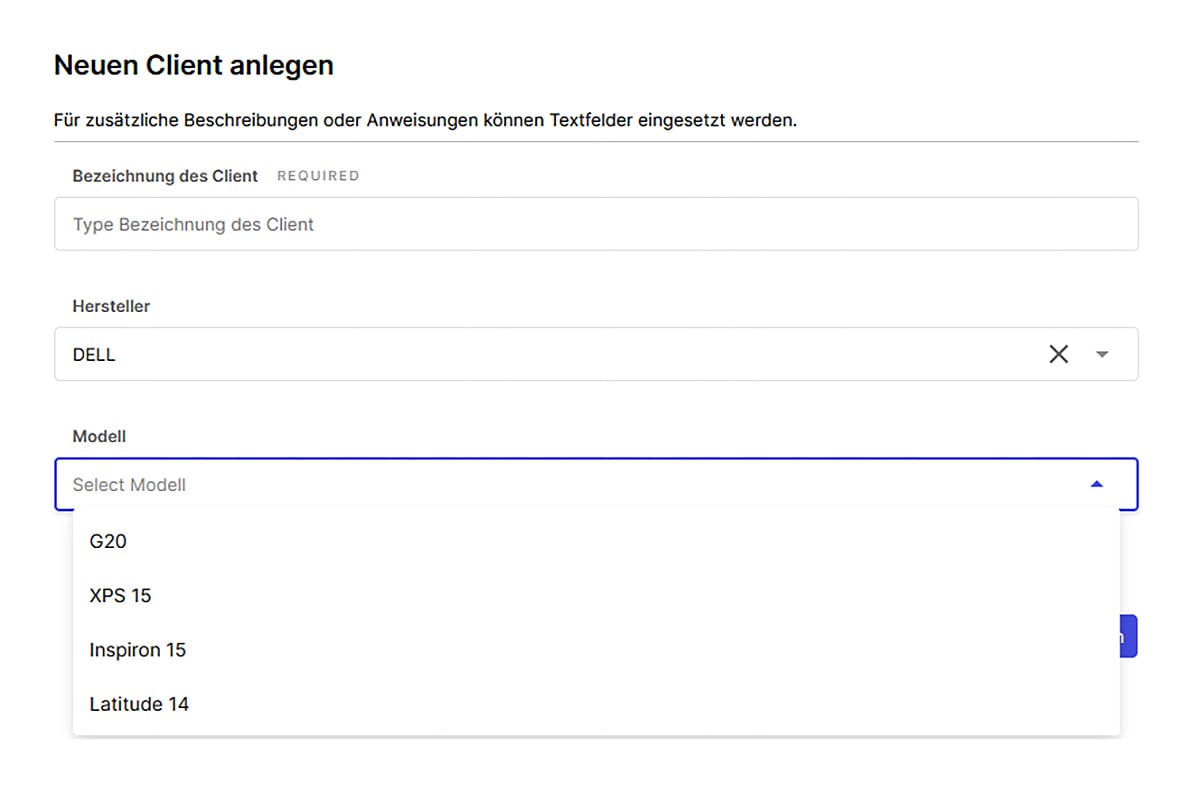
The categories for manufacturer and model are now available in the form. The existing values from i-doit are available for this.
The selection of predefined values ensures a valid database in the CMDB. This makes it possible to evaluate information via the Report Manager.
Set up pages
For better subdivision of forms, different pages can be used in the form. Particularly in the case of extensive forms, entries can be broken down into different sections such as basic, general, technical and organisational information.
Permission system
Like other i-doit pro add-ons, the Forms add-on is seamlessly integrated into i-doit. This controls exactly which people and groups of people are allowed to access forms. As always, who is allowed to read, edit, create, archive, delete and administer forms is defined granularly.

Use cases from practice
As a hub for data, information from many sources must flow together. The IT department cannot be solely responsible for gathering all the necessary information in the long term. Therefore, other departments must also be able to provide valid information.
This could be, for example, the vehicle management department, which creates new leased vehicles and contracts in the CMDB via a corresponding form. Ideally, this should also include contact persons, warranty and maintenance periods.
Likewise, users could be provided with a form with which they are able to register their own devices such as smartphones or notebooks. This data can then be used for ancillary systems such as mobile device management.
Advantages at a glance
- Easy creation of forms via the i-doit web interface.
- Form data can be used to create new assets.
- Delegation of tasks to other departments, service providers or organisations
- Created forms can be integrated into intranet pages via a generated link or distributed via communication and messenger services.
- Ensure a valid database in the CMDB
We will be happy to answer your questions about the Forms Add-on at sales@i-doit.com.

